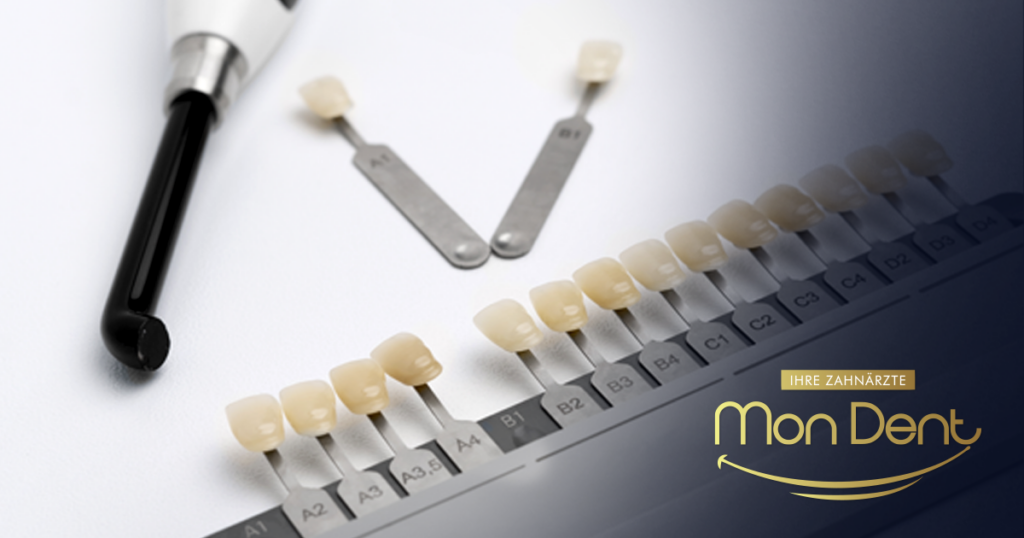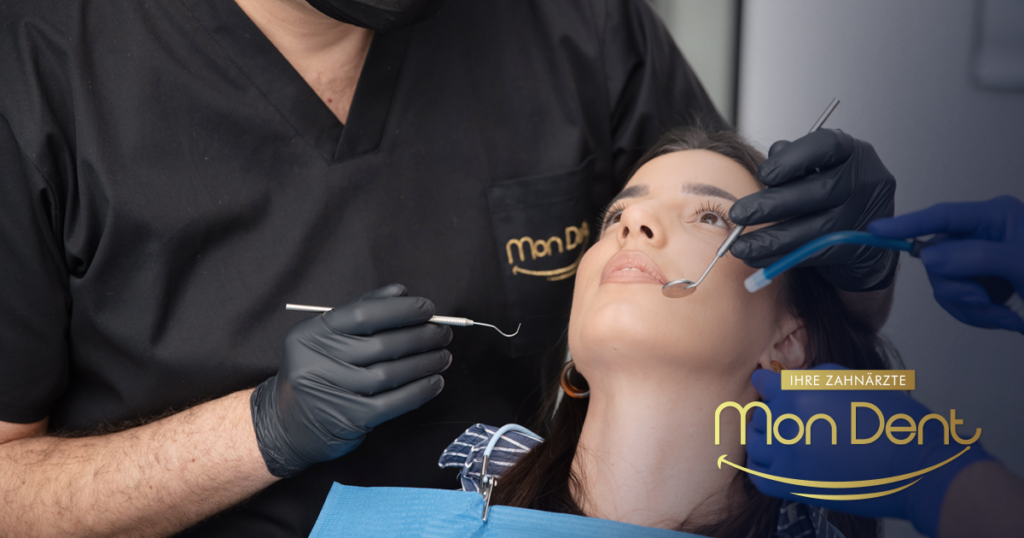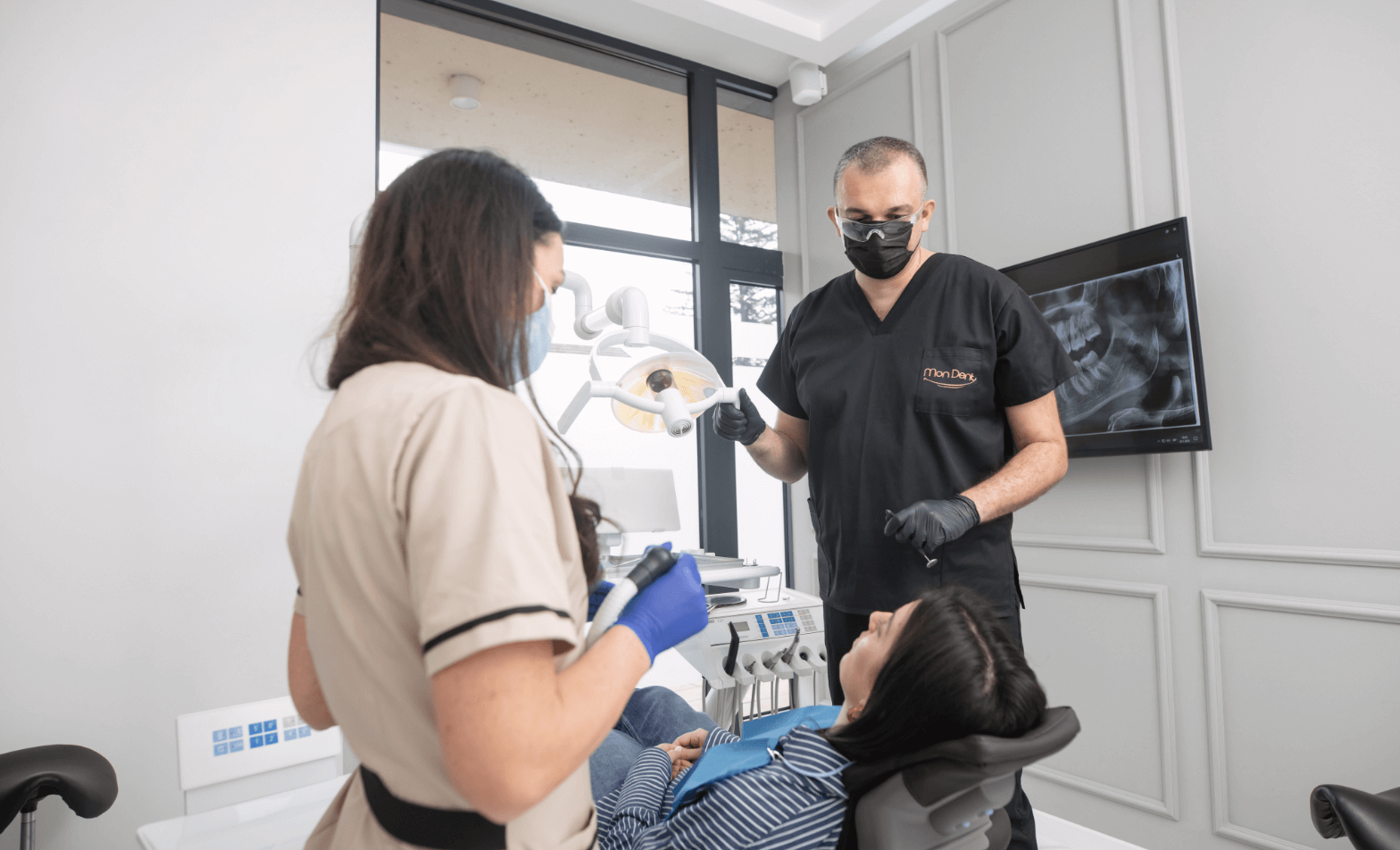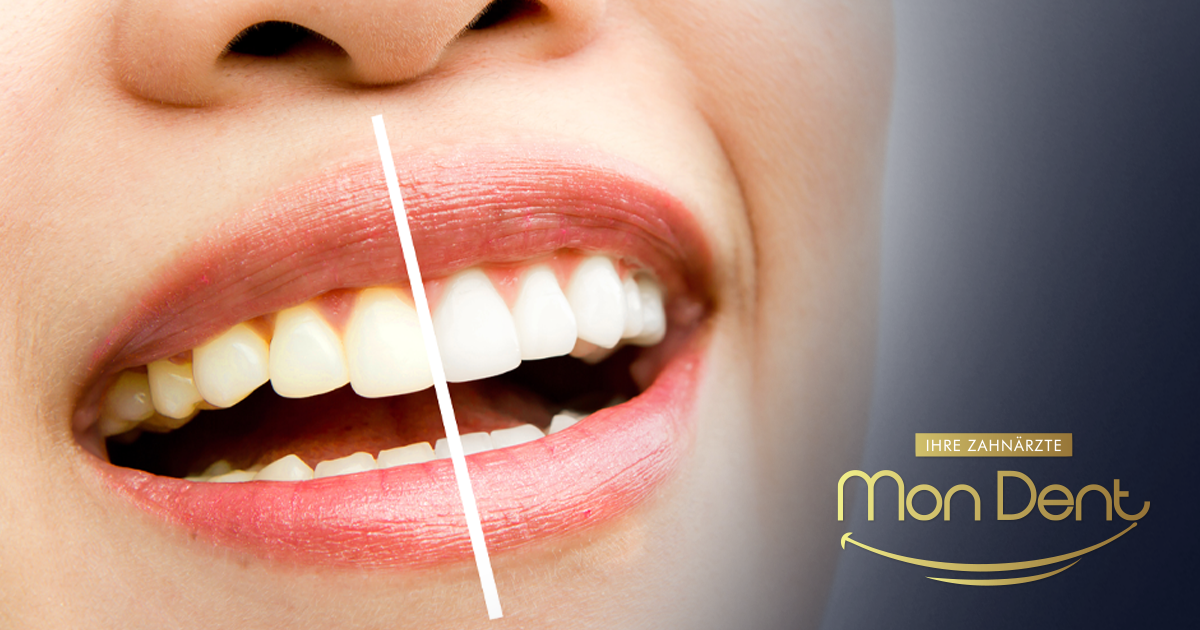Content:
- What is tooth pigmentation?
- External tooth pigmentation
- Internal tooth pigmentation
- How to recognize tooth pigmentation and when to visit a dentist?
- Solutions for tooth pigmentation
- Prevention of tooth pigmentation
- Conclusion
Have you noticed that your smile is losing its natural shine? That your teeth are starting to show stains or discoloration that you can't remove with regular brushing? There's a good chance that you're dealing with a problem known as tooth discoloration. It's important to note that you are not alone – this is a common occurrence that affects many people, regardless of age.
In this blog post, we will explore in detail what tooth pigmentation is, why it occurs, how to recognize it, and, most importantly, how to effectively solve this aesthetic and sometimes health challenge, especially with the help of modern methods offered by the Mondent practice.
If you dream of a bright and confident smile, you've come to the right place. Keep reading to learn everything you need to know about tooth discoloration and the path to a radiant smile again. Don't forget that visiting the dentist is the best prevention in keeping your teeth clean and healthy, so schedule an appointment today and choose a dentist who will take impeccable care of the health of your teeth.
What is tooth pigmentation?
Tooth pigmentation refers to a change in the color of teeth from their natural shade. Teeth may become yellow, darker, or have specific spots of various colors – from brown and black to greenish or orange. It is important to distinguish tooth pigmentation from genetically determined tooth color.
While natural color varies from person to person, tooth pigmentation is the result of external or internal factors that affect the surface of the tooth or the internal structures. You will learn how to effectively prevent tooth pigmentation in the rest of our blog. Before that, we need to introduce you to the types of tooth pigmentation.
There are two basic types tooth pigmentation, which differ in cause and place of origin.
External tooth pigmentation (extrinsic)
This is the most common type of tooth pigmentation and occurs when pigments from food, drink or tobacco are deposited on the surface of the tooth enamel. These stains are usually brown, black or yellowish, and sometimes greenish or orange deposits can also appear in children. The causes of external tooth pigmentation are diverse and are often related to our daily habitsCoffee, tea, red wine, carbonated drinks (especially dark ones), berry juices, and dark sauces like soy sauce or balsamic vinegar are big culprits, as these products contain pigments that easily bind to the surface of the teeth.

Also, smoking and tobacco products, such as tar and nicotine from cigarettes, cigars, or chewing tobacco, leave stubborn, dark stains that penetrate deeper into the microscopic pores of the enamel, making them one of the most challenging forms of extrinsic tooth pigmentation to remove.
Poor oral hygiene, which includes insufficient or improper brushing and flossing, allows plaque and tartar to build up. Pigments stick to the rough surface of plaque and tartar more easily, worsening tooth pigmentation.
Internal tooth pigmentation (intrinsic)
This type of tooth pigmentation is more complex because the discoloration occurs inside the tooth itself, in the dentin (the layer beneath the enamel) or enamel. Internal tooth pigmentation is often more difficult to remove and requires specific dental procedures.
Causes of internal tooth pigmentation
Causes include tooth trauma, where a blow or injury to the tooth can damage the blood vessels inside the tooth, leading to internal bleeding and discoloration. The use of medications, such as tetracycline antibiotics during tooth development (in infancy or during the mother's pregnancy), can cause permanent gray or brown pigmentation of the teeth in children. Excessive fluoride intake (fluorosis) can also lead to white, brown, or black spots.
Aging It plays a role because with age, tooth enamel becomes thinner, revealing the yellowish dentin underneath, and the dentin itself naturally darkens, contributing to the overall pigmentation of the teeth. Caries and dental problems also contribute, as large carious lesions may appear as dark spots, while a tooth that has suffered nerve degeneration or undergone endodontic treatment (root canal treatment) may darken due to internal bleeding or tissue debris.
Also, some people naturally have darker teeth due to genetic factors, and rare genetic diseases like amelogenesis imperfecta or dentinogenesis imperfecta affect the proper development of enamel or dentin, which can lead to abnormal tooth color and sensitivity.
How to recognize tooth pigmentation and when to visit a dentist?
Recognizing tooth discoloration is usually easy because the color changes are easy to see. You may notice a general yellowing or darkening of the teeth, where the entire tooth may appear darker than before. You may also notice specific stains, which are brown, black, yellow, or other colored spots or lines on the surface of the tooth. Sometimes the color is uneven, with some teeth darker than others, or different shades appearing on the same tooth.
When is it time to visit the dentist?
It is recommended that you schedule an appointment as soon as you notice significant changes in your teeth color, especially if they are accompanied by other symptoms such as: sensitivity, was or bleeding gums. Even if the changes are only cosmetic, a visit to the dentist is essential. He or she will be able to accurately diagnose the cause of the tooth pigmentation and recommend the most appropriate solution. It is important to emphasize that you do not try to remove stubborn stains yourself with abrasive products, as this can damage tooth enamel.
Remember, early recognition and intervention are key to successfully addressing tooth pigmentation and maintaining oral health.
Solutions for tooth pigmentation
When it comes to removing tooth pigmentation and restoring a radiant smile, it is crucial to seek professional help. Mondent Dental Clinic offers a range of modern solutions that are tailored to the individual needs of each patient. Our team of experts will perform a thorough examination to determine the cause of your tooth pigmentation and suggest the most effective treatment.
Professional teeth cleaning
The first and often most important step in combating external tooth pigmentation is professional teeth cleaningThis is not only an aesthetic procedure, but also a vital one for your oral health. At Mondent, professional teeth cleaning includes the removal of tartar using an ultrasonic device, which removes hard tartar deposits that are an ideal substrate for pigment deposition.
After that, the teeth are polished with special pastes that remove remaining surface stains and smooth the enamel, making it less susceptible to new pigmentation. To thoroughly remove pigments from hard-to-reach places, we use the Air-Flow device. It uses a mixture of air, water and special powder to gently but effectively remove stains even from the smallest cracks, leaving the teeth smooth and shiny. This is especially effective for tooth pigmentation caused by coffee, tea and smoking.
Regular professional cleaning, recommended every six months, not only removes tooth pigmentation but also significantly contributes to the prevention of cavities and gum disease.
Teeth whitening with Zoom lamp
For a deeper and longer-lasting transformation, especially when it comes to internal tooth pigmentation or simply the desire for a significantly brighter smile, Mondent recommends professional teeth whitening. Zoom with a flashlightThis is one of the most effective and safest methods available in modern dentistry.

Process Zoom teeth whitening is fast and provides spectacular results. The dentist first protects the gums and soft tissues with a special gel and protection. Then, a special whitening gel, which contains hydrogen peroxide, is applied to the surface of the teeth. The gel is activated by a special Zoom lamp that emits blue LED light. This light accelerates the chemical reaction of the gel, allowing oxygen to penetrate the tooth enamel and dentin, breaking down the colored molecules that cause tooth pigmentation and darkening. The entire procedure usually takes about 45 minutes to an hour (depending on the desired result and individual tooth characteristics) and can lighten teeth by several shades, often up to 8 shades.
Other solutions for tooth pigmentation
In some cases, especially with very stubborn internal tooth pigmentation that does not respond to whitening, Mondent offers other aesthetic solutions.
- Dental veneers (coming soon): Thin ceramic shells that are permanently bonded to the front surface of the tooth. Veneers are the perfect solution for concealing severe tooth pigmentation, as well as for correcting the shape and size of the tooth.
- Rosaries: If a tooth is significantly damaged or excessively darkened due to trauma or decay, a dental crown may be a solution that completely covers the tooth and restores its natural appearance and function.
These procedures fall under the domain of cosmetic dentistry, and our team will advise you on the best option for your specific problem. tooth pigmentation.
Prevention of tooth pigmentation
Although tooth pigmentation can be effectively addressed, prevention is always the best strategy. Reduce the risk of stains by properly oral hygiene, which includes regular and thorough brushing of teeth at least twice a day with toothpaste containing fluoride and daily use of dental floss or interdental brushes. Also, limit your intake of "colored" foods and drinks – reduce your consumption of coffee, tea, red wine, carbonated drinks and dark juices, and even white wine because it has been proven to affect the health of your teethIf you consume them, use a straw and rinse your mouth with water immediately afterward. Quitting smoking is also key, as smoking is one of the biggest causes of stubborn tooth pigmentation, so quitting will drastically improve the color of your teeth and overall oral health.

Don't forget about regular dental checkups – Visit your dentist at least twice a year for a professional cleaning and check-up. This allows for early detection and treatment of problems before they become serious.
Conclusion
Tooth pigmentation is a common problem, but fortunately, there are effective solutions. Whether it's surface stains that can be easily removed with a professional cleaning, or more stubborn internal tooth pigmentation that requires Zoom light whitening or aesthetic veneers, Mondent Dental Clinic offers comprehensive services to make your smile shine again. Don't let tooth pigmentation ruin your confidence. Take control of your smile today!
Feel free to contact us. contact and schedule a consultationYour dazzling smile is waiting for you!





